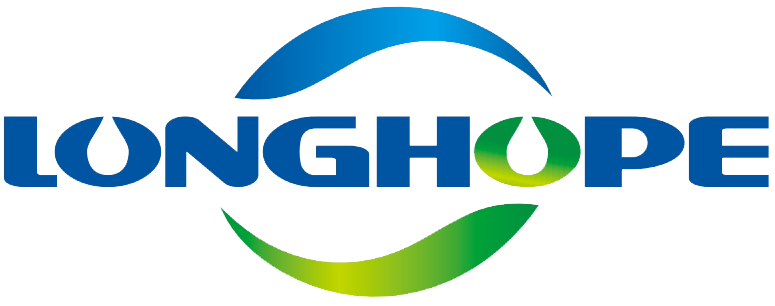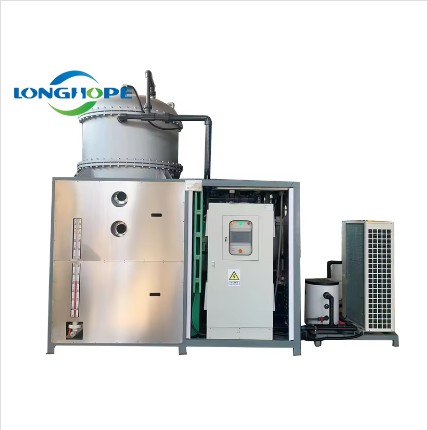Revolutionizing Wastewater Treatment with Vacuum Evaporation
Case Study: Chemical Plant Achieves Zero-Liquid Discharge
A chemical manufacturing facility grappling with serious wastewater issues found itself stuck between strict environmental regulations and rising costs for proper disposal. They desperately needed something better than what they had been doing with all those complicated chemical waste streams coming out of their operations. So they went ahead and installed industrial vacuum evaporators, which completely changed things around for them turning the whole operation into what's called a Zero Liquid Discharge (ZLD) system. Basically, these machines separate harmful stuff from water using lower pressure environments that actually bring down the boiling temperature and speed up how fast water evaporates. With this vacuum evaporation setup in place, the plant stopped discharging any wastewater at all, hitting that coveted ZLD status while meeting all sorts of tough environmental requirements. Environmental groups have pointed out that facilities adopting similar approaches see massive improvements in water reuse rates and significantly cut down on pollution levels, helping push forward broader sustainability objectives across industries.
From a money standpoint, things really turned around for this facility. Water bills dropped dramatically after they started recovering so much of their process water, plus disposal costs went way down too. The company saw their investment pay off pretty quickly once these systems were running full time. Installing those recovery mechanisms cut waste handling expenses by almost half according to their latest reports. Beyond just saving cash, this change actually helps meet all sorts of environmental regulations that manufacturers have been struggling with lately. And let's face it, nobody complains when operational costs shrink while compliance stays intact.
Municipal Facility Cuts Costs with 95% Water Recovery
A local government plant had serious trouble getting good water recovery rates for years, dealing with all sorts of problems in their wastewater handling system. Back when they didn't have vacuum evaporation tech installed, their water recovery numbers stayed pretty low, way below what the operators wanted both operationally and financially. Things changed completely after they brought in those industrial vacuum evaporators though. Water recovery jumped up to around 95%, which is pretty amazing considering where they started. They managed this by putting the equipment in the right places and tweaking how things worked on site, making it much easier to separate out clean water from the rest of the stuff coming through the municipal system. Looking at the actual data collected over time shows just how much better everything got once these machines were part of the process, proving that investing in newer technologies can make a big difference even in older infrastructure setups.
After putting the system into action, we saw real money saved and operations running much smoother than before. The numbers told a clear story too water consumption dropped off sharply, which meant lower bills for the city. Local leaders were pretty impressed with what they saw, several council members actually gave public praise during recent meetings. Environmental specialists across the country have been pushing for these vacuum evaporators lately, pointing out how cities can go green without breaking the bank on maintenance costs. Looking at this particular project, it's hard not to see why other towns might want to follow suit. While every situation will have its own challenges, this example definitely shows what's possible when innovative technologies meet practical budget constraints.
Boosting Efficiency in Chemical & Petrochemical Industries
Solvent Recovery in Ethylene Production
Industrial vacuum evaporators play a crucial role in enhancing solvent recovery within ethylene production processes. These pieces of equipment are designed to optimize the separation of solvents, resulting in significant improvements in the efficiency of petrochemical operations. Here are some critical advantages of applying this method:
- Technical Characteristics: The implementation of vacuum evaporators reduces the boiling point of solvents, thus allowing for effective separation without excessive energy consumption.
- Efficiency Gains: This method has led to improved recovery rates. Studies indicate that solvent recovery can see a boost by up to 15%, showcasing the cost-effectiveness in ethylene production.
- Expert Insights: Industry experts advocate for the adoption of vacuum evaporators due to their ability to enhance operational efficiency and reduce environmental impact.
By leveraging these benefits, petrochemical companies can achieve both economic and environmental gains, making vacuum evaporation technology a critical component in modern solvent recovery efforts.
Corrosion-Resistant Evaporators for Hazardous Materials
Handling hazardous materials in chemical processes demands specialized equipment that can withstand corrosive environments. Corrosion-resistant industrial vacuum evaporators are designed to meet these demands with advanced materials and configurations. Here's how they tackle these challenges:
- Material and Design: Utilizing materials such as stainless steel and graphite ensures compatibility with aggressive chemical compositions, providing durability and longevity.
- Real-World Examples: Numerous chemical plants report significant operational efficiency and reduced downtime due to the robust design of these evaporators.
- Maintenance and Cost Benefits: Statistics indicate that maintenance costs can decrease by 20%, translating into considerable savings over time.
These innovations not only improve the reliability of chemical processing operations but also align with sustainability objectives and regulatory compliance, showcasing their importance in managing hazardous materials effectively.
Pharmaceutical Innovations: Preserving Product Integrity
Low-Temperature API Concentration
Keeping active pharmaceutical ingredients at lower temperatures during concentration remains essential for preserving what makes them work properly in medications. Many manufacturers rely on industrial vacuum evaporators for this task since they can operate at much cooler temps than traditional methods. The advantage here is obvious when dealing with delicate compounds that break down easily under heat stress. Take certain protein-based drugs as an example these need careful handling throughout production. According to several industry insiders tracking developments across the sector, there seems to be growing interest in adopting these gentler processing techniques moving forward. While still evolving, this approach promises better results while also cutting costs over time for many pharmaceutical companies looking to optimize their operations without compromising product quality.
Meeting cGMP Standards in Vaccine Production
Following current Good Manufacturing Practices (cGMP) remains a must for producing safe and high quality vaccines. Industrial vacuum evaporators play a big part in hitting those cGMP benchmarks because they give better control over processes and maintain consistent results throughout batches. Many vaccine producers now run their operations with vacuum evaporation tech built right into production lines, which speaks volumes about how dependable these systems actually are when it comes to validation requirements. Real world experience shows that once companies install vacuum evaporators, they typically see noticeable boosts in efficiency. Production schedules get shortened without compromising on quality standards, something that matters a lot in regulated environments. Industry reports back this up too, showing clear numbers behind why advanced equipment like vacuum evaporators continues to gain traction across pharmaceutical manufacturing facilities worldwide.
Sustainable Food & Beverage Processing Solutions
Flavor Concentration Without Thermal Degradation
The food and beverage sector constantly struggles with flavor concentration problems caused by heat damage during processing, something that affects both taste and nutrition levels. Vacuum evaporation stands out as a solution for keeping those delicate flavors intact while maintaining nutrient content. The process works at much lower temps than traditional heating methods, so there's less chance of breaking down what makes these foods special. Coffee roasters and juice makers particularly benefit from this approach since it helps maintain the authentic character of their products. Companies adopting vacuum evaporation report better shelf life and customer satisfaction ratings across various product lines. Food scientists are now experimenting with new ways to tweak industrial vacuum systems for even better flavor retention. As consumer demand grows for products that taste just like they did fresh off the farm or factory floor, manufacturers who invest in these technologies will likely see stronger returns in both quality perception and sales performance.
Energy-Efficient Dairy Waste Valorization
Making something useful out of dairy waste matters a lot for the industry, especially when it comes to saving energy through better practices. As people get more concerned about what happens to our environment, vacuum evaporation tech offers real promise for turning those wastes into products worth selling. The process helps recycle materials and cuts down on how much power we need to run things. Research shows companies can actually save money this way, which makes good business sense too. Industry experts are starting to agree that these kinds of technologies will change how we handle waste going forward, making our factories work smarter rather than harder. We're seeing more demand for greener methods across the board, pushing manufacturers to upgrade their equipment so they fit with modern sustainability goals. Vacuum evaporators specifically stand out because they cut down on pollution while still getting the job done faster and better than older methods did.
Future Trends: Smart & Sustainable Evaporation
IoT-Enabled Predictive Maintenance Systems
Industrial maintenance practices have changed quite a bit since IoT systems came along, especially when it comes to vacuum evaporators used in manufacturing plants. The new technology basically works by putting sensors all over equipment and then analyzing data as it happens. What this means is that problems can be spotted long before they actually happen. Plants that rely heavily on vacuum evaporation processes benefit greatly from this because downtime is kept to a minimum and everything runs smoother overall. Some factories report cutting their unexpected repair bills down around 30% after installing these smart systems. Looking ahead, most professionals working in this area think we'll see even better things happening. As IoT continues to evolve alongside automation technologies, vacuum evaporators will become much easier to customize for different industries' unique requirements. This kind of smart integration represents a major step forward for protecting valuable industrial equipment while getting more work done in less time.
Hybrid Multi-Effect Evaporator Designs
The popularity of hybrid multi effect evaporators is rising fast because they just plain work better than old school systems. These setups use several evaporation stages one after another, which cuts down on energy needs and helps keep things eco friendly at the same time. The way they handle heat makes a real difference too many plants see around half their energy bills drop sometimes even more than that depending on conditions. Factory managers across different sectors tell similar stories about improved performance and lower running costs, showing why companies are switching to these hybrid models. With so many businesses trying to go green right now, this kind of technology looks like it will become standard practice for vacuum evaporation processes going forward, especially as we push for cleaner manufacturing solutions.
FAQ
What is vacuum evaporation in wastewater treatment?
Vacuum evaporation is a process used in wastewater treatment to separate contaminants from water under reduced pressure, which lowers the boiling point and enhances evaporation efficiency.
How does vacuum evaporation achieve zero-liquid discharge (ZLD)?
Vacuum evaporation helps achieve zero-liquid discharge by eliminating wastewater discharge through effective water recovery mechanisms, essentially recycling all water for reuse within the facility.
What are the economic benefits of using vacuum evaporators?
Economic benefits include reduced water sourcing expenses and disposal fees, leading to cost savings and a swift return on investment.
Can vacuum evaporation be used in the food and beverage industry?
Yes, vacuum evaporation preserves delicate flavors and essential nutrients by operating at lower temperatures, ensuring the integrity of food and beverage products.

